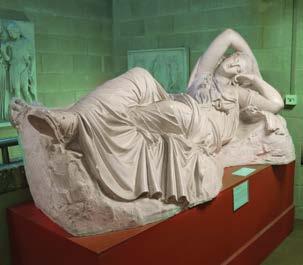
1 minute read
THE MUSEUM OF CLASSICAL ARCHAEOLOGY - GREEK HEROES AND HEROINES
The Museum of Classical Archaeology
GREEK HEROES ∆ND HEROINES
Advertisement

Ancient gods came in all shapes and sizes. In this activity you will make your own, inspired by our collection! Here are two examples of what Greeks thought heroes were like.
ODYSSEUS
In Greek mythology Odysseus travelled for ten years to get home. This was his punishment for arrogance. SPECIAL POWERS: resourceful (has lots of ideas), problem solving PHYSICAL ATTRIBUTES: traveller’s hat CHARACTER TRAITS: adventurous, loyal, arrogant APPEARANCE: dishevelled, shaggy beard, muscular
∆RI∆DNE
This princess helped the hero Theseus defeat the Minotaur and escape from the labyrinth. Without her he would have been eaten. SPECIAL POWERS: strategic thinking PHYSICAL ATTRIBUTES: woollen cloak, crown CHARACTER TRAITS: wise, helpful APPEARANCE: young woman, long black-brown hair
CRE∆TE YOUR OWN HERO OR GOD
Find the insert that looks like the page, below. Choose what your hero/heroine is like by adding ideas to the four boxes. Draw something that symbolises those things next to them (for example a brain next to wisdom, or wings next to flying).
Give them a name. Male names in ancient Greece often end with -us, -os, or -es. Female names often end with ‘a’ or ‘e’.
SPECIAL POWER:
this is the thing that the person or god is really good at, their talent.
PHYSICAL ATTRIBUTE:
an accessory, a symbol or something they owned.
CHARACTER TRAIT:
give your hero/heroine a virtue and a flaw. Remember that no one is perfect in Greek mythology.

APPEARANCE:
how do they appear in Greek art?
SPECIAL POWERS PHYSICAL ATTRIBUTES
CHARACTER TRAITS APPEARANCE










